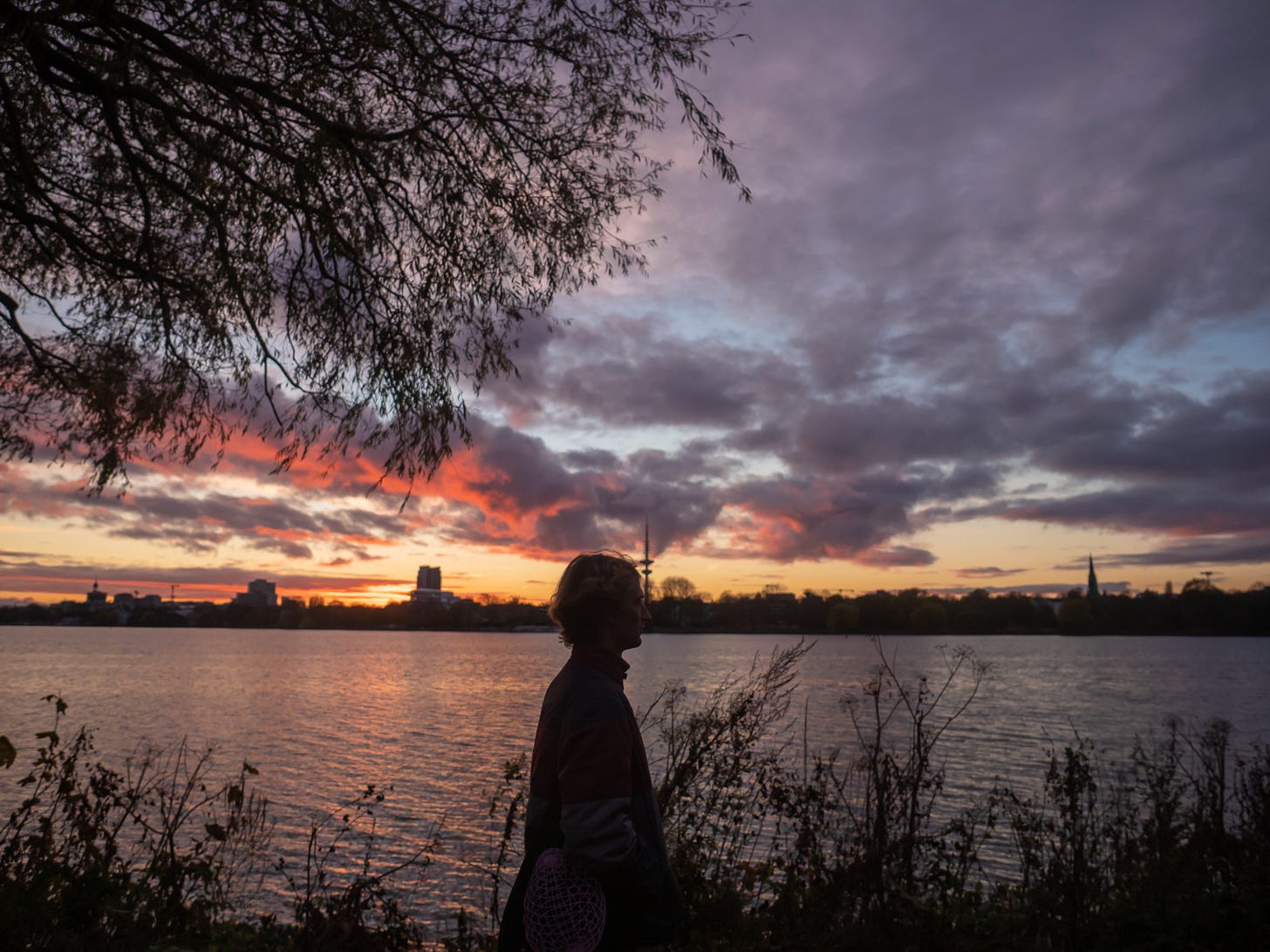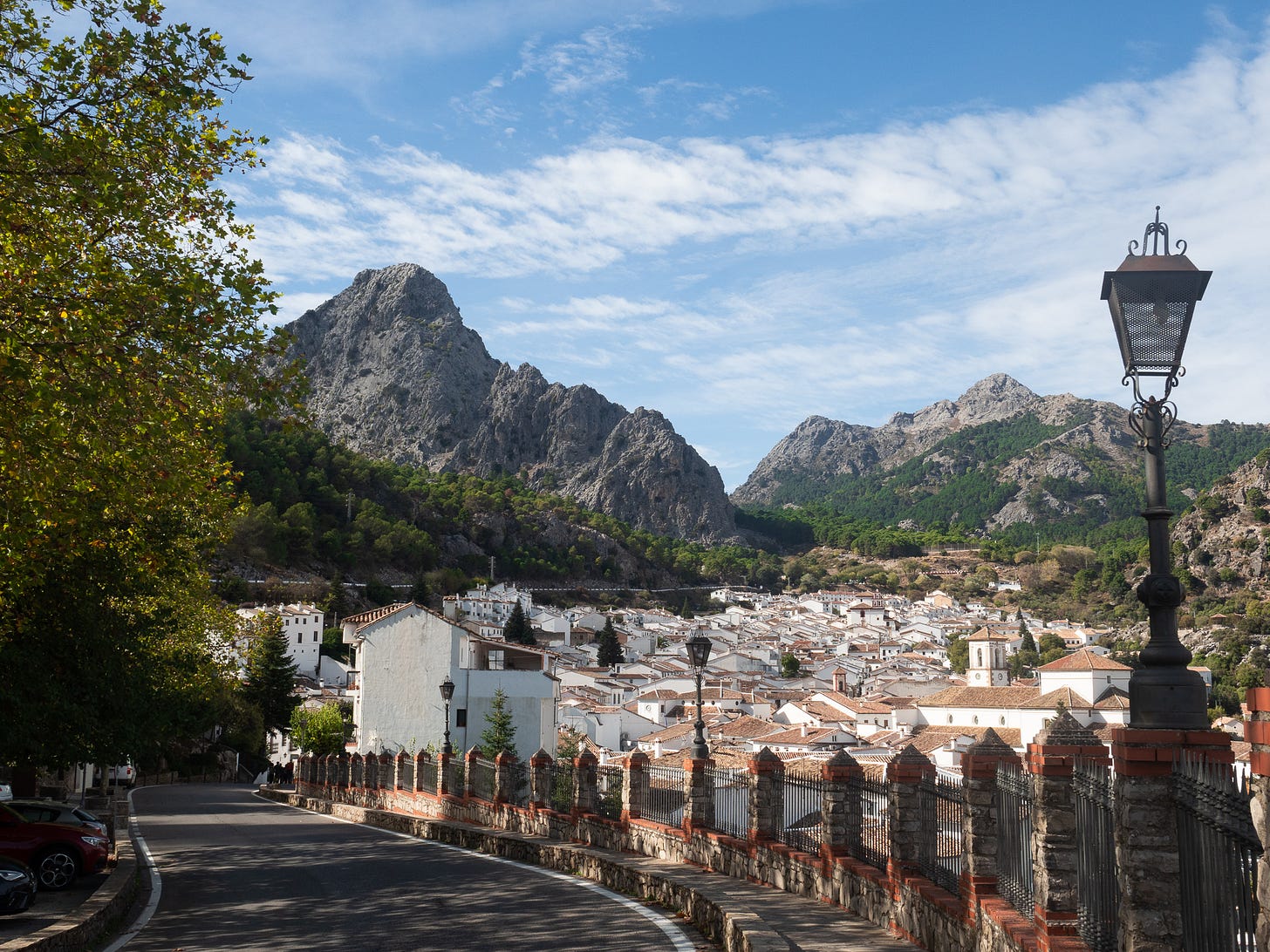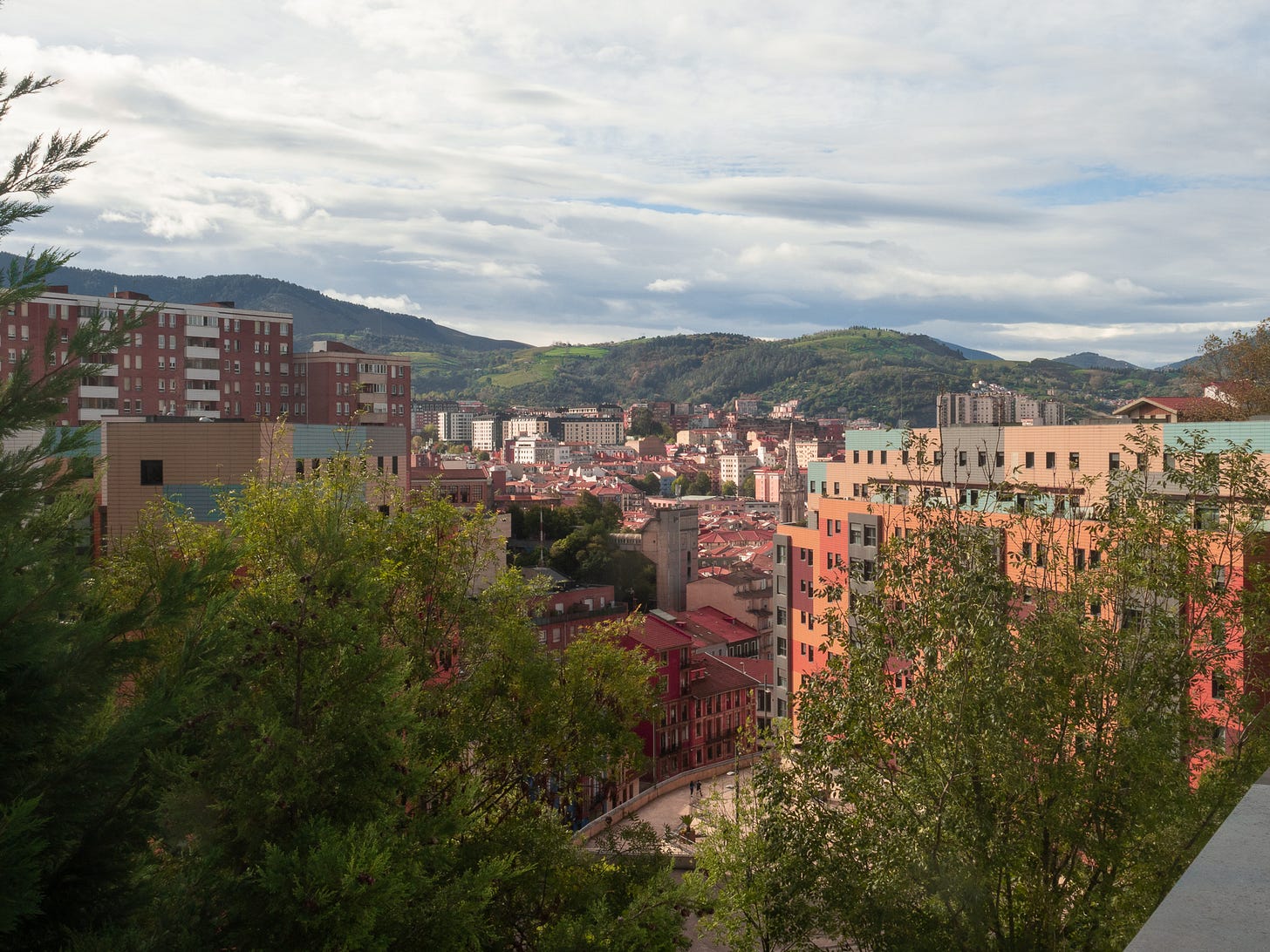Week 09 and 10: You Spin My Head Right Round
Apologies for the delay but as Deutsche Bahn says, "Vielen Dank für Ihre Verständnis." Now I'm back...and sweatier than ever.
Order Up
You spin my head right round, right round
When you go down, when you go down down
You spin my head right round, right round
When you go down, when you go down down—Flo Rida, Right Round (2009)
This week was full of roundabouts, rotundas, fast turnarounds, ordering another round, and a club playlist of dubstep hip-hop hips + some Bee Gees (?) that would put Flo Rida and Ke$ha to shame. They say that the wait is always worth it but that might not be the case this week, so feel free to give me some scathing reviews on Yelp. So order up! Serving you double the quantity for half the quality.
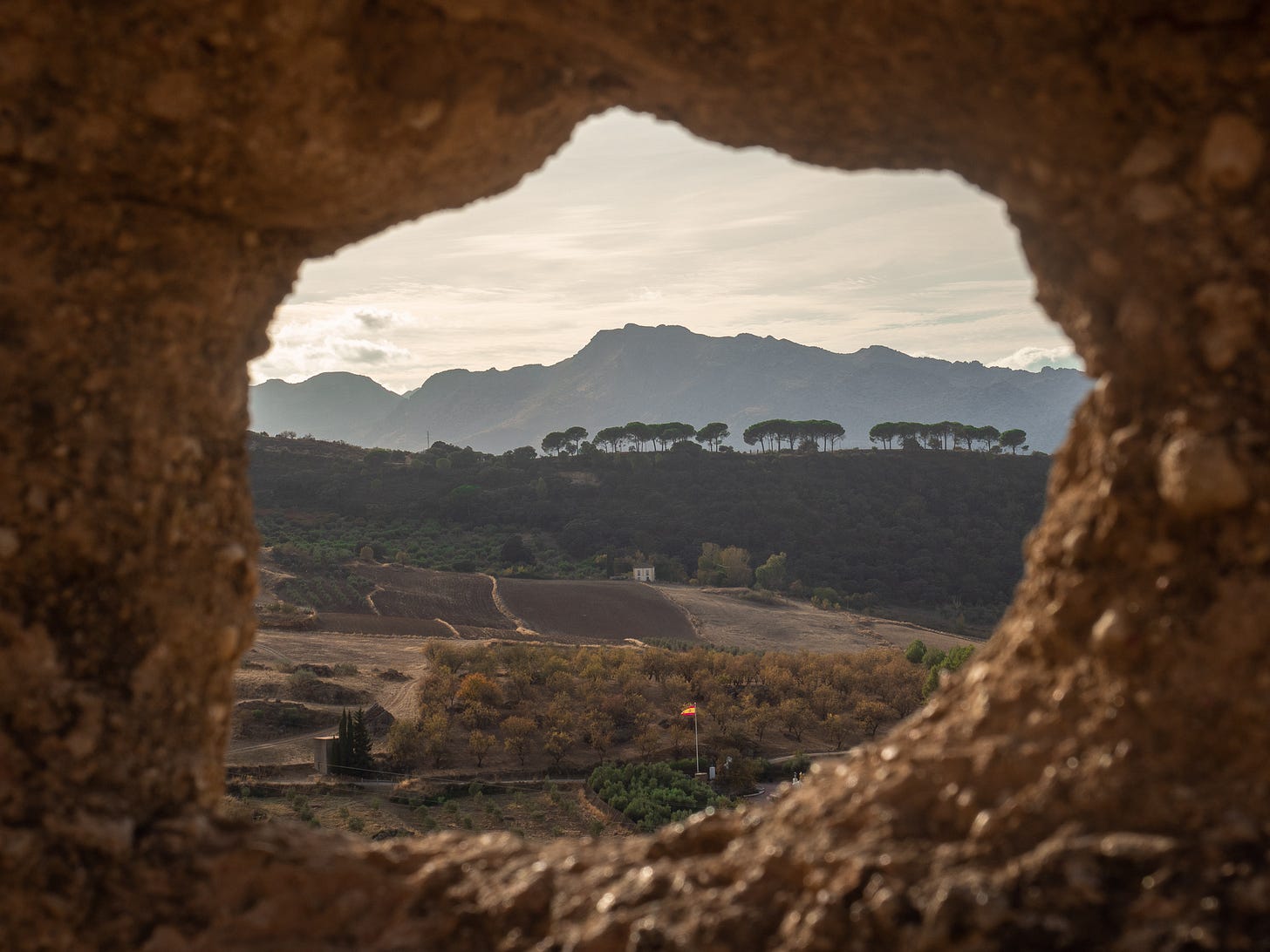
The Bread
Top Slice: Not much to report on Week 09 since it was spent prepping for my trip. A highlight moment was running the entire Außer Alster loop with a friend at night which was a break from logistics. I didn’t head south for the winter (only the week) but met a friendly Australian from down under named Harry who is a dead-ringer for John Mulaney and a friendly flamenco player from Seville who is a dead-ringer for Frodo Baggins. My friend Neel came in the day after I returned from Spain so it was a fast turnaround and yesterday night friends on my program came out directly after turning fast around, literally, on the Winter Dom rides. He and I spontaneously went to a concert of a band we had never heard before, Stereolab, which was synth-heavy and psychedelic and wonderful to see older adults just completely rocking out and letting their body just let the music pass through. I’ve dropped a song from their album Dots and Loops below.
Bottom Slice: After leaving Spain which was filled with lounging in lush gardens, dining on sunny terraces, and surrounded by mountains, I googled “Why should I live in Germany instead of Spain.” The ever reliable source, Reddit, basically said that you shouldn’t BUT Germany has Christmas! And classical music! And Markets! And the classic Christmas markets filled with music! So the markets will open next week and I will make the rounds and be grateful there are no hills in Hamburg that would cause me to slosh Glühwein, a five ingredient drink so delicious it will make you feel warm and cozy, all over myself while walking (c.f. Week 08 post—I blame the hills of Heidelberg).
The Filling
“If you have a problem and customer service says they will look into it, you won’t hear from them ever again. But if you do, get the problem resolved by saying let’s circle back to that.
—Josh, business major, high school classmate, junior year prom date.
LET’S CIRCLE BACK TO THE TIME when I left for Spain last Friday, returned to Hamburg at midnight on Wednesday and my friend Neel arrived on Thursday. Sleeping eight days in a row on the ground reminded me of the time I didn’t buy a mattress for three weeks in Seattle this summer because I thought I would save money, but then bought one because I couldn’t save my dignity when my co-worker saw my empty room with only a mattress pad on Zoom and said concernedly, “Do you need help finding furniture?”
LET’S CIRCLE BACK TO THE TIME I said I wanted to be an owl because then I could spin my head a full-360 degrees. That is clearly, not possible, but I felt like my head was doing with all the stimulation of new cities and spaces. My time in Spain was mostly spent with my friend Devon García, a fellow Bowdoin grad in 2021, who has lived in Seville teaching English for around two years. Needless to say, the time was so valuable, restorative, and thought-provoking. Thank you for being a phenomenal host. Devon had a bit of prepping to do for her week of classes so I had the chance to wander the city of Seville a bit. Even on a weekday at 11pm, things were buzzing and my head was whipping back and forth listening to impromptu music, dancing right outside of plazas in front of cathedrals, laughter and chatter in bars that spilled into the little cobblestone alleyways, and the sounds of kids playing football right in the middle of it all. On Monday while she was teaching, I hopped on a bus with around forty people older than fifty en route to three villages nestled in the mountains northeast of Seville. I used a tourism service because train and bus connections are much more infrequent in Spain and it was a good choice. The tour guide, Lucas, was extremely friendly and would give an excellent overview of the history in both Spanish and English. The white villages were incredible and quite old, protected from conquerors by nature of the mountainous terrain. They also are known for their olive groves, Spanish bullfighters or matadors, and speaking of bulls…a struggling economy.
We visited an olive oil factory that has been in the hands for more than 12 generations and got to wander through the olive tree groves, go to a tasting room, and learn the nuanced difference between virgin and extra virgin olive oil. I’m a big fan of olive oil as a result of past Christmas gifts from my aunt Ruth Ann—the specialty olive oils from Illinois are 10/10. However, our guide Lucas, said sadly on the bus that so many young people are leaving the small villages that it is likely this staple factory will close in the next few years. Discussions of the economy and recession are obviously at the forefront right now and the terms being thrown around like bull market and bear market and the whole disaster with tech lay-offs/changing hands is enough to make anyone sweat. As much as life in Spain is relaxed and desirable—eating outside in a T-shirt in mid-November on a terrace or sleeping with the windows completely open, the economy struggles. The unemployment rate remains incredibly high but at one point was around 25%. I sat on the bus thinking how sad it was for such a historic and family-held factory to be at the risk of collapse especially as their method for collecting olives is much kinder to their trees than large-scale industry. It takes more effort and labour, but instead of using a machine to shake the trees, they use a handheld rod. Automation tends to disturb Olea europaea root systems and kill them earlier. We can honour the sustainability of the natural world and the resources they offer us yet the business models we operate in, especially right now are clearly unsustainable. How do we reconcile this?
LET’S CIRCLE BACK TO THE TIME I said time was a construct in Week 08 and I felt affirmed because the curator’s label at the Guggenheim Museum Bilbao said, “Time is a construct.” On Tuesday, I was in Bilbao which was insanely beautiful and had complex architecture with its hyper-modern bridges, waterfront, Frank Gehry Guggenheim building juxtaposed with soaring gothic cathedrals in the Zazpikaleak (Old City) and its open plazas and parks filled with spiral, metal trees being wrapped with holiday lights for the Christmas markets since there are no large evergreens to stick in the middle of the city. The Christmas markets have been in the headlines too recently, especially pertaining to the energy crisis and with the recent developments in the Nordstream Pipeline (a behemoth of the topic I have neither the room, expertise, nor insight to dive into). Even German cities debated about whether to hold them or not with some even calling to fully ratchet back lighting. I will actually look into what Hamburg has decided to do and report back.
"These can and should also be able to take place this year. But a festive mood does not include orgies of light and illumination as in earlier years,"
—Jürgen Resch, Deutsche Umwelthilfe (DUH) Federal Managing Director
I visited the fully lit Guggenheim Museum Bilbao which was designed by Frank Gehry and whose counterpoint in New York was also designed by a guy named Frank. Moving through art museums just affirms to me that I find art extremely…ahem…provocative and relevant to what society is fixated and struggling with at this time. My mom sent me a funny text regarding all the current protests and climate activism happening in museums, asking me whether I was partaking myself. These thoughts circulated in my mind as I followed the endless looping ramps in the museum and as an art historian to-be (?) examine the layout and the curatorial objectives in an extremely critical lens—sometimes to a fault.
The structure of both Guggenheim Museums is to break free of the static rotunda, the traditional viewing room for classical statues or ceramics. While the objective is admirable and facilitates of course, more interaction and dynamism, it has a habit of reinforcing confusion or disorientation in art museums. Collections at the Guggenheim already have a tendency to confuse—contemporary art can be highly conceptual and inaccessible and contrary to our general understanding of aesthetics. Directing people through space is just as important if not more critical to the idea of transparency in museums and interfacing with art which I struggled with in Bilbao.
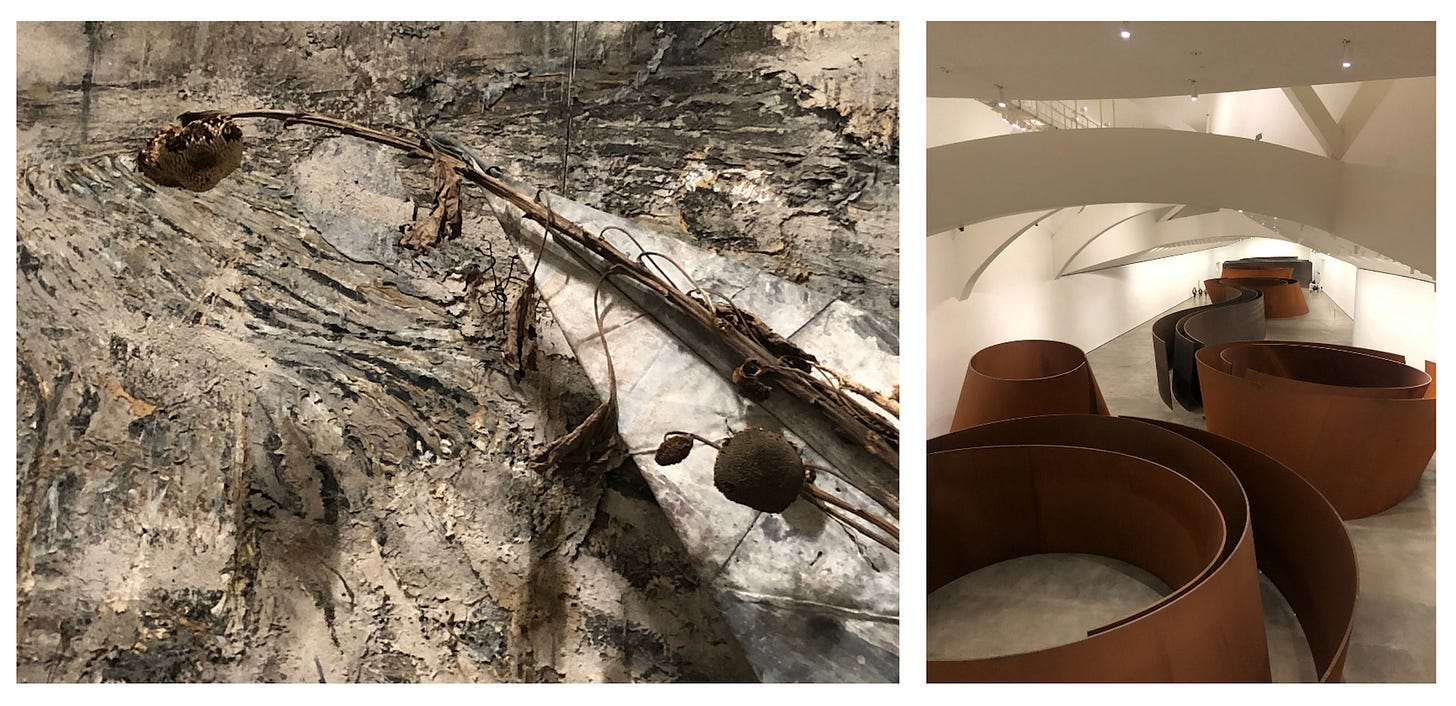
The massive room filled with metal sheets by Richard Serra in the photo above was a place for play and contemplation to live simultaneously. Elderly patrons accompanied younger children who were screaming in joy and weaving through the sculpture-made tunnels like pin balls while also engaging in play themselves. The piece was commissioned specifically for the Guggenheim Bilbao and The Matter of Time (1994) aims to “produce different effects on the movement and perception of the viewer…[and] also includes a progression in time. On the one hand, there is the chronological time that it takes to walk through and observe it from beginning to end. On the other, there is the time during which the viewer experiences the fragments of visual and physical memory, which are combined and re-experienced.”
I found the piece effective as I was subsumed entirely in the walls that held very little light but held all the sound of the space and the airiness of hundred-foot high ceilings. From the ground level, it worked and as you can see, moving up the floors a bird’s eye view is possible. From this same platform, looking down, as you moved your body right round right round, was a Jenny Holzer piece. Holzer is known for her LED light constructions which span the length of the room and try to engage with the viewer by sending inflammatory and well, provocative phrases or texts through its lit up channels. One piece dealing with the ongoing Syrian war, THERE WAS A WAR (2019) used text written by Holzer herself and documents from 131 individual eyewitness accounts from civilian protesters arrested, detained, and tortured by the Assad regime as well as statements from Syrian children and their parents. The disappointing thing about Holzer’s work is that her medium tends to distract from the critical messages about incarceration, war, and human rights. The neon light is instantly eye-catching and draws attention but often for the sake of Instagram photos or social media—the text subservient to the backlit bodies of viewers.
There is definitely more nuance to her work but it triggered in me, combined with the text I received from my mom, the limits of art’s ambition and how it is directly culpable in the climate crisis with the maintenance of the grounds, buildings, and the installation and transport of exhibitions across the world. The sunflower (see above) a common motif in Anselm Kiefer’s work reminded me of the oil splashing against Vincent Van Gogh’s Sunflowers in October and the public’s immediate fixation on the physical object itself which could be seen as a relic of a time romanticising nature and ignoring the compounding and relentless effects of industrialisation.
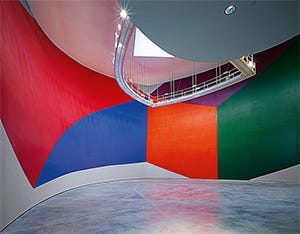
Finally, going back in time and lacing this all together, I think about Bowdoin’s Art Museum and its rotunda. The first exhibition I ever visited as a first-year was called “Art Purposes” which aimed to transition the antiquated space and relics to active observation for coursework and scholarship. I benefited greatly from the collection and newly acquired/loaned pieces in my first year seminar class but still struggle with the idea of how to move them beyond a liberal arts context.
One of Sol LeWitt’s famous ‘wall-drawings’ spanned an entire room of the Guggenheim which is grounded in a conceptual purpose, but the label also disclosed LeWitt’s own involvement in his artistic community in New York and giving back beyond the object. He helped found Printed Matter, Inc., a publisher and also a community space fully devoted to-up-and-coming or independent artists. Does engagement with community guarantee ‘making good’ on an artwork’s promise? It certainly translates it to the real world and shows an interest in a creator’s own intellectual self, but that identity too, always in the eye of the public, is inherently something constructed.
Presenting exceptional works of art since 1970 from the collection, many on view for the first time, this exhibition highlights art’s purposes as tools for observation, inquiry, and learning in a Liberal Arts context. — Bowdoin College, Art Purposes Exhibition (2019)
Finally, thinking of time as a construct, this week was also spent remembering a classmate who passed away a year ago and holding my friends back home as closely as one can far away. Mourning is something that almost makes me wish time was linear; the intensity directly after the loss and a fast turnaround of recovery. But it’s not. It is completely round about and spirally and does more to distort time than any Richard Serra art piece can. I hesitate to put this section at the end as I find it more important than a lot of the playful musings I can get into or quick analyses of art, but the order of my writing reflects in many ways the order of how I think and make connections between things and which I hope is clear in these posts, is incredibly circular.
Another Bowdoin friend sent me an article by another Bowdoin alum whose presence on campus overlapped with mine in many ways and many circles but never fully aligned. He is a really gifted writer and I was surprised after thinking about LeWitt to see his article in The Adroit Journal. The piece is grounded in his experience viewing another wall drawing of LeWitt’s in Massachusetts and what mourning a classmate he worked closely with, recreated with, and cared for looked and looks like for him. It is highly probable that the general readership of the journal is most closely attuned to the writer’s self-awareness on the limitations of art and writing itself, but as someone who did lie close-ish, to the ‘Bowdoin Bubble’ whose campus center can facilitate care in so many tangible and intangible forms, I find elements and lines in the piece that I need to return to and will always hit home. And maybe, therein lies the purpose of creativity that generates art or writing. To not force emotion but to give it a space to be seen and a container to hold it. The piece is “A Circle Whose Center is Everywhere” and I think, is very much worth the read.

LET’S CIRCLE BACK TO THE TIME I was obsessed with math and used pythagoreanthereom as my password for everything. The day I learned that the equation of a circle can be found using the Pythagorean Theorem was one of the best days of my life and blew my mind. I’m not being ironic but the amount of irony dispersed throughout these two weeks was uncanny. So here’s the proof in triangle form:
Helena was in Seville in 2018 + Devon is in Seville now + Neel will be in Seville in 2023.
I talked to someone who is an architect + I reunited with a friend who is studying to be an architect + I stumbled upon an alum who was in my first architecture focused course at Bowdoin.
The difference between Spanish and German culture is apparent even in transit. On the flight to Spain, it was completely quiet. But on the way back, everyone was chatting and laughing. Shockingly, I was put in business class (still have no clue why) and ended up talking to an architect who is responsible for contracts across the country of Spain and was headed into Madrid. It was a lovely conversation. + My friend from Colorado who I have not seen in two years either, Madeline, is in school at Cal Poly SLO studying architecture. It was totally serendipitous—she is doing her semester abroad in Seville and I only found that out through a social media post the day before I left + I was on my LinkedIn grind as per usual, trying to figure out what to do with an art history degree. Last week I had a meeting with the arts career advisor from Bowdoin to see if she could connect me with any Bowdoin alumni living in Europe or specifically Germany. Unfortunately, most live in Switzerland and by most, I mean very few as a whole which was quite surprising to me. While I was in Bilbao, I randomly decided to filter my searches to Spain and did a double take when a classmate popped up who skied for the nordic team at Bowdoin and is not studying at the university. There are so many ironic things, I can’t even list them: he was in my Bauhaus class which launched my love for architecture and Germany, is a midwesterner (SO to Rochester, Minnesota). When I was adopted, my parents met many other families who were adopting girls from China at the same time and around the same age. The older sister of one of the girls in my ‘cohort’ went to Bowdoin and skied with him. Finally, my off-campus house last year is historically home to the nordic team but was not my year. I lived in the same room as a girl named Lily on the ski team who painted a picture of Christian that still hangs in the living room of Blue Vic until this day. My head won’t stop spinning.
The Sauce
Northern Spain or the Basque region is known for having some of the best food in the world due to its location on the ocean, mountains, and tradition of cheese-making. The region has the highest per capita concentration of Michelin star restaurants in the world and can be ordered in one of the oldest languages in Western Europe (pre-Spanish), Euskara. As a very qualified restaurant reviewer, I asked myself, how does one make a Michelin star worthy dish? The sauce of course which is a chef’s most secret and coveted recipe. Lucky you, I’m sharing mine with you for free.
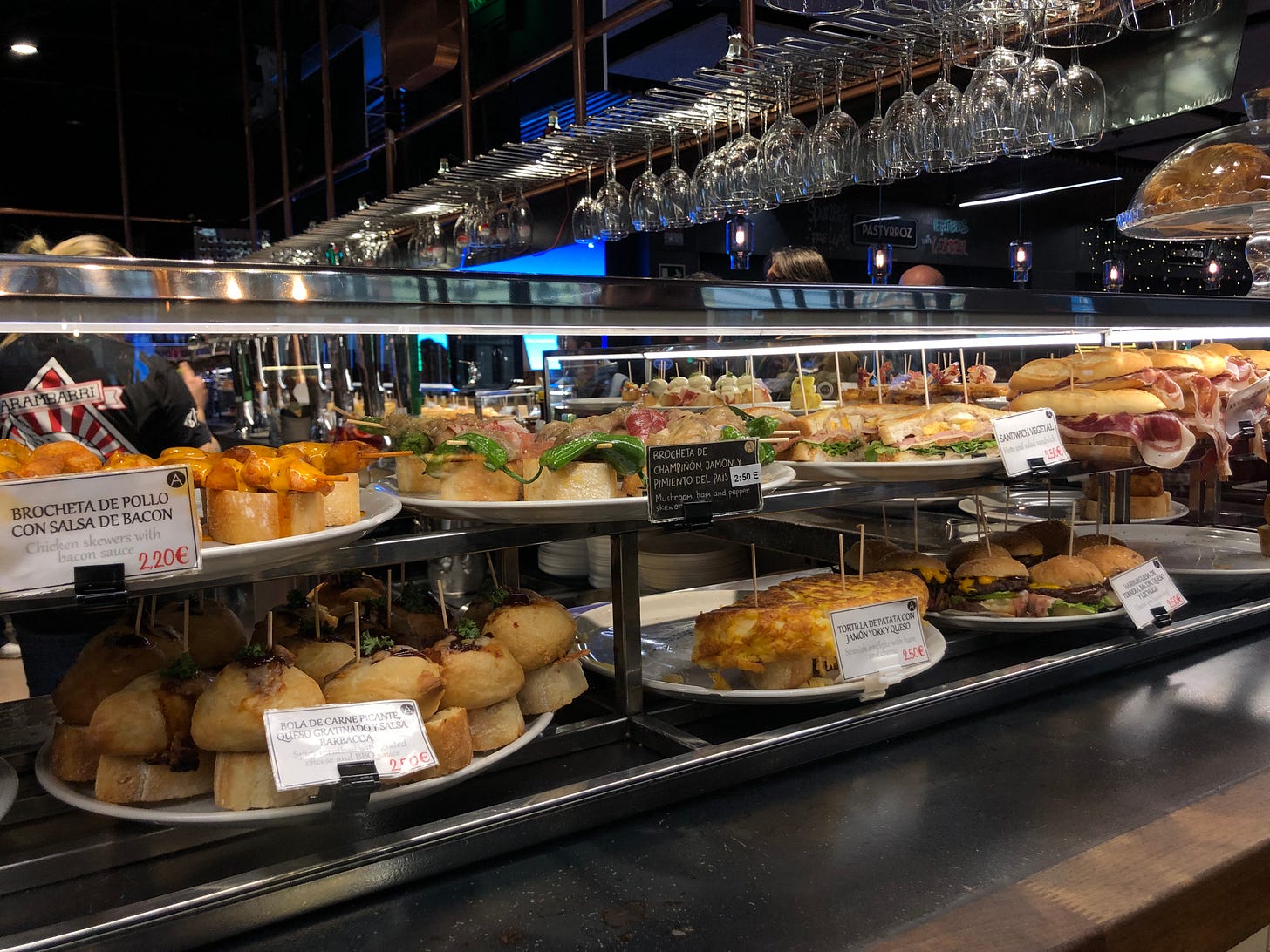
INGREDIENTS
Start with a delicious seafood dinner. Anchovies Pintxos are a Basque speciality and but I ordered and ate so many other types of these round delights that I felt like Kirby.
Pair with alcohol. Wine, beer, copious amounts of kombucha…take your pick.
DIRECTIONS:
Let it simmer all night. Sleep is for the weak. This is a strong sauce. No sleep.
Add heat. Spain was a toasty 70 degrees and I was sweaty. But now, I’m back in the dark, frozen meat locker that is Hamburg.
Dehydrate it. Because you were so sweaty. And it’s a Herculean task to find public hydration in Europe.
Add some energy. Someone will ask you if you want coffee at every single meal in Spain. Breakfast, lunch, and at 11pm when dinner begins. Say yes.
Wait for the sauce to settle. Go on a nice long run.
Shake it vigorously. Past examples include intense turbulence on my flights, shaky buses going up switchbacks in the Sierra Nevadas, fast cars whipping around German round-abouts.
Sharing is caring and this is probably oversharing, but the sauce often boils over or in less delicate terms, emerges from my mouth.
WHERE CAN I SERVE IT?
In the Japanese Gardens in Portland Oregon, Boston Airport, Capitol Hill Train stop, and this week, right next to the oldest bull-fighting arena in Spain in a city called Ronda. A culinary experience so unforgettable you should probably definitely hesitate to order another round.
Mystery Meat
Last week’s photo has no meaning. Truly, no meaning. But it was a man in Mannheim on the morning of my missed train from Heidelberg and while I was hangry and remained, unfed, the pigeons were gifted with day old bread. I witnessed the scene with envy and ate stale bread in a daze when I got home.
Every week I have to confess to you all which grade-F-funny-smelling mystery meat I consumed the week prior. A bigger confession: I cheated on my vegetarian diet and ate so much jamón, also known as the “finest ham in the world” that this week I’m breaking more rules week and giving you all a double serving of mystery meat. I hope you don’t get the meat sweats. Ask Sam Poppen.




